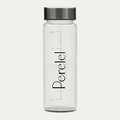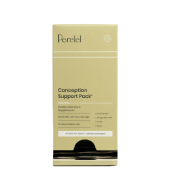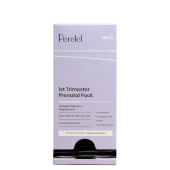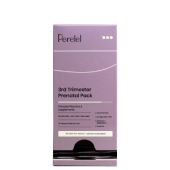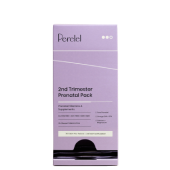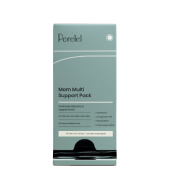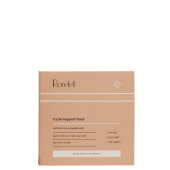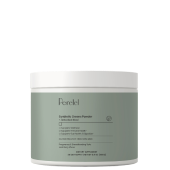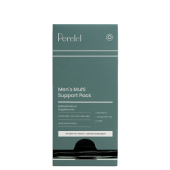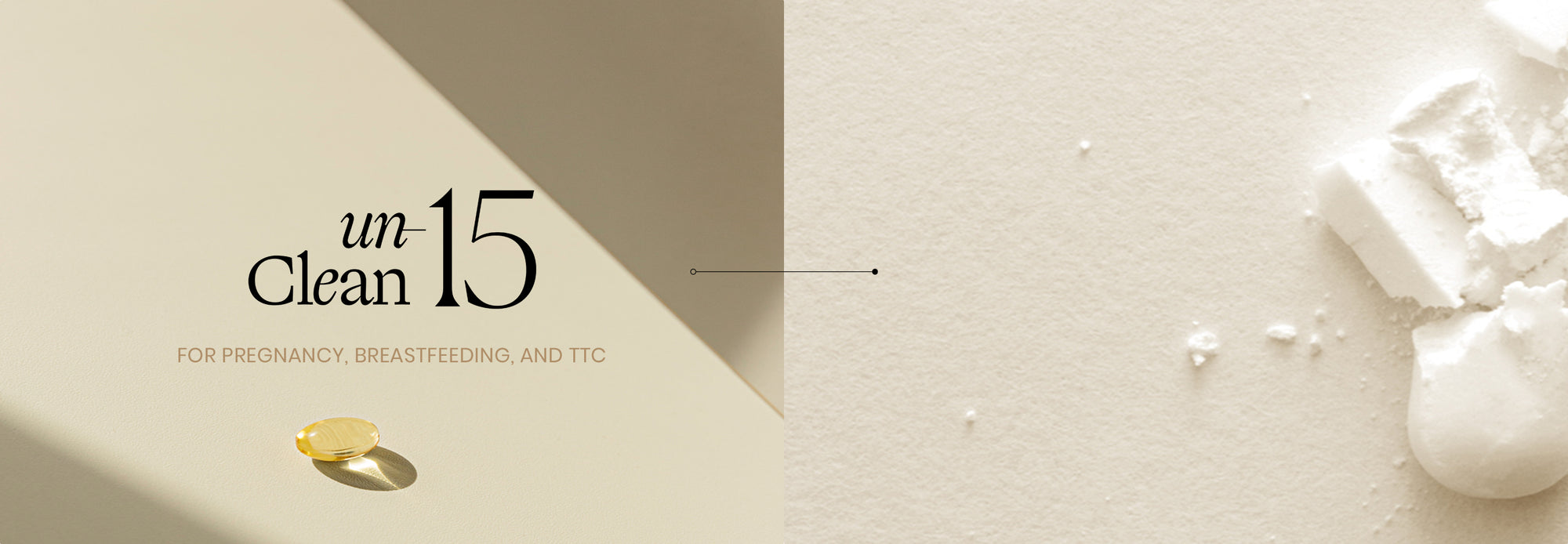
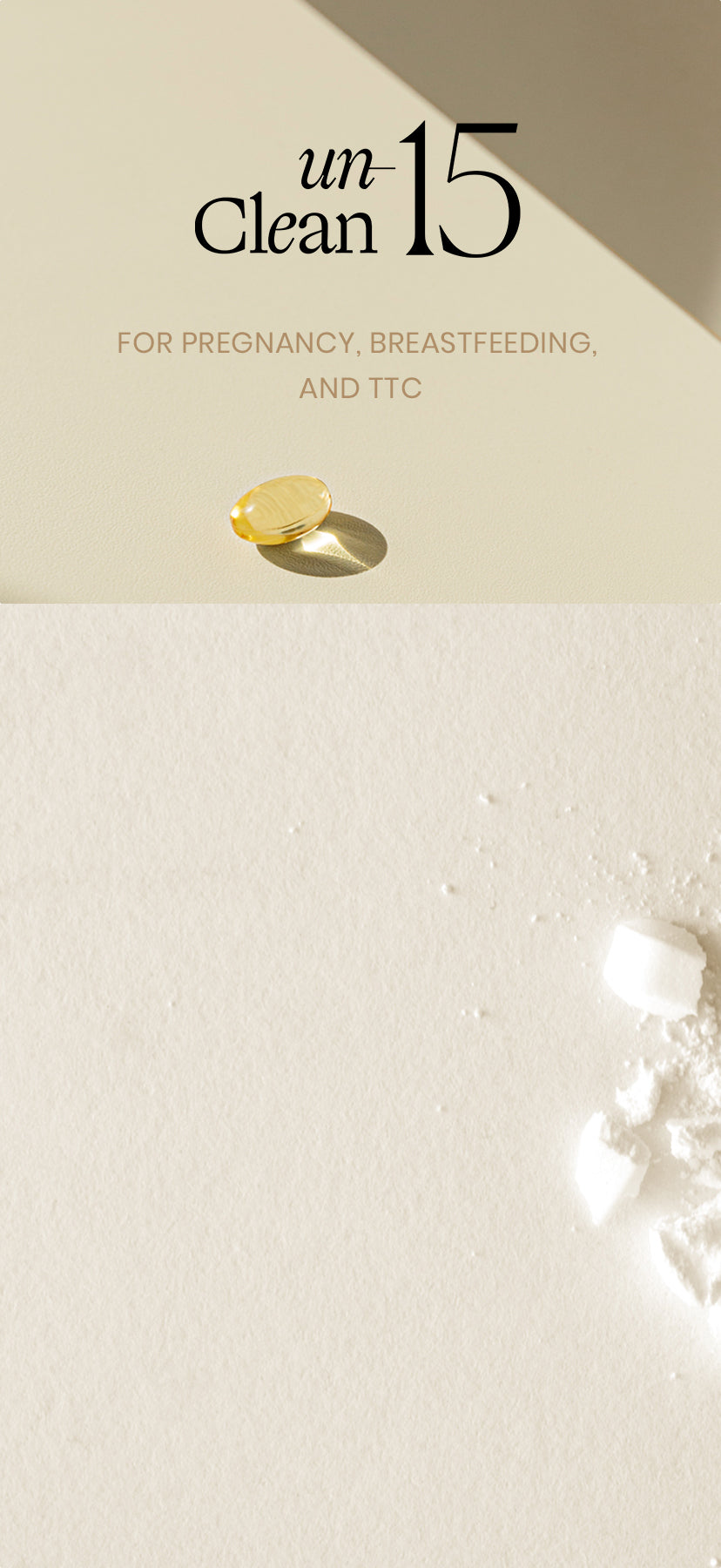
Knowledge is power.
When there’s any doubt or question as to the safety of an ingredient, at Perelel we prefer to take the safe option and skip it altogether. A commitment that extends to our own vitamin formulations since day one. And we thought we’d make it a little easier for you to do the same. Our team of doctors and resident toxicologist have identified the Unclean 15—a list of potentially toxic, unsafe ingredients to avoid during pregnancy, while breastfeeding, and when you’re trying to conceive.
THE NEW STANDARD FOR WHAT YOU PUT IN (AND ON) YOUR BODY
THE NEW STANDARD FOR WHAT YOU PUT IN (AND ON) YOUR BODY
THE NEW STANDARD FOR WHAT YOU PUT IN (AND ON) YOUR BODY
THE NEW STANDARD FOR WHAT YOU PUT IN (AND ON) YOUR BODY
THE NEW STANDARD FOR WHAT YOU PUT IN (AND ON) YOUR BODY
THE NEW STANDARD FOR WHAT YOU PUT IN (AND ON) YOUR BODY
LABEL CHECK
So you can make empowered, informed decisions about your health.
Select your product type + paste your ingredient list below to see if it's pregnancy-safe.
Liquid error (sections/page-ingredient-checker line 89): Could not find asset snippets/icon-red-x.liquid
Unfortunately, we found some toxic ingredients in your product.
Scroll down to learn more.
Congratulations!
Your product is toxin-free.
OUR EXPERTS

Dr. Banafsheh Bayati, MD, OB/GYN, FACOG Medical Co-Founder, Perelel
Dr. Bayati is a board-certified Obstetrician/Gynecologist and mom of three children.

Stephanie Lauri, RD, CLEC, Pre & Postnatal Dietician
Stephanie Lauri is a Registered Dietitian, Certified Lactation Educator, and a mom of two.

Mike Maynard, DABT, ERT, Toxicologist
Mike Maynard is a board-certified toxicologist with over 30 years of experience in global regulatory toxicology and safety.
OUR RATING SYSTEM:
 Limited Safety Data
Limited Safety Data
INGREDIENT USE:
OUR EXPERTS

Dr. Banafsheh Bayati, MD, OB/GYN, FACOG Medical Co-Founder, Perelel
Dr. Bayati is a board-certified Obstetrician/Gynecologist and mom of three children.

Stephanie Lauri, RD, CLEC, Pre & Postnatal Dietician
Stephanie Lauri is a Registered Dietitian, Certified Lactation Educator, and a mom of two.

Mike Maynard, DABT, ERT, Toxicologist
Mike Maynard is a board-certified toxicologist with over 30 years of experience in global regulatory toxicology and safety.
1. Parabens
Prolonged paraben exposure has been linked to many negative effects such as disruption of the microbiome; activation of estrogen hormones, which has been linked to the development of breast cancer tumors and tissues; and lower levels of thyroid function.*
OUR RATING:

OUR RATING:

(ethanol), isopropylparaben (isopropanol), propylparaben (N-propanol), butylparaben (butanol), isobutylparaben (isobutanol), pentylparaben (pentanol), heptylparaben (heptanol), benzylparaben (benzyl alcohol), pentylparaben (pentyl alcohol)
2. Retinol + Retinoids
Both derivative of vitamin A, much of the concern around retinols and retinoids is related to the ingestible medication isotretinoin, also known as accutane, as it is known to cause birth defects involving the face, heart and brain. While the topical formats are absorbed into the bloodstream at much lower levels, the American Academy of Dermatology still recommends that you stop using these products during pregnancy.*
OUR RATING:

OUR RATING:

adapalene, tazarotene, trifarotene, isotretinoin
3. Titanium Dioxide
You may be familiar with this ingredient on your sunscreen label—but did you know it may be in your supplements, too? The FDA deems titanium dioxide to be safe, but the European Food Safety Authority has banned titanium dioxide for its potentially dangerous properties. Though limited research has been conducted, studies suggest that titanium dioxide may be carcinogenic when digested, especially when in nano-sized particles. In addition, titanium dioxide has been found in the placenta in low concentrations, indicating that it is capable of crossing placental membranes of pregnant women and may be transferred to the fetus. Some studies have also seen accumulation in the lungs, liver, kidneys, spleen, central nervous system, and heart.*
OUR RATING:


OUR RATING:


titania, tioxide
4. Oxybenzone
Studies have suggested that oxybenzone, an ingredient commonly used in chemical sunscreens, can be absorbed into the bloodstream of pregnant women—even at the recommended usage—and may be able to potentially reach the fetus and cause harmful cell changes during embryonic development. What’s more, another study has linked oxybenzone to a rare birth defect in a baby’s intestine called Hirschsprung's disease.* And because oxybenzone is a fat-soluble compound, it is stored in your body much longer, making it difficult for expecting women to really know what their exposure level is. That’s why we’d recommend ditching your oxybenzone sunscreen for a pregnancy-safe alternative instead.
OUR RATING:

OUR RATING:

eusolex 4360, escalol 567, KAHSCREEN BZ-3
5. Sodium Benzoate
Also used as a coolant in cars, sodium benzoate is a preservative that’s added to vitamins to help your body break them down after swallowing. Some experts have raised concerns about the carcinogenic properties of sodium benzoate, while other studies have linked its consumption to heightened rates of ADHD, allergic reactions, inflammation, and stress.* While some research suggests positive indications for the ingredient, still we wouldn't recommend ingesting it in your daily vitamin.
OUR RATING:

OUR RATING:

6. Hydroquinone
A skin-whitening agent used topically for conditions like chloasma and melasma, it is estimated that we absorb up to 35 to 45 percent of the chemical hydroquinone in topical use. While there is limited data available on the safety around hydroquinone during pregnancy, because the absorption is so high compared to other products, it’s recommended to minimize exposure with this one until there’s more information available.*
OUR RATING:


OUR RATING:


1, 4-benzenediol, quinol, benzene-1,4-diol, p-diphenol, p-hydroxylphenol, hydrochinonium, hydroquinol, tequinol
7. Salicylic Acid
A common ingredient in acne-fighting skincare, The American College of Obstetricians & Gynecologists (ACOG) considers salicylic acid generally safe for use during pregnancy when used topically in a concentration of two percent or less. As for when it’s ingested, it’s recommended to avoid the ingredient during pregnancy based on the potential side effects of taking aspirin, which actually contains the ingredient.* Either route, many healthcare providers recommend skipping this ingredient since there are an abundance of pregnancy-safe ingredients you can use to combat pregnancy acne instead. We recommend talking to your provider to determine what's best for you.
OUR RATING:


OUR RATING:


8. Artificial Colors + Dyes
Used to give vitamins artificial colors to make them more appealing, artificial colors and dyes are typically made from petroleum and have generated a lot of controversies as they’ve been linked to the exacerbation of ADHD symptoms in children, brain tumors in animals, and it is suspected that several dyes may be tainted with carcinogens. Though no direct link has been established, we'd recommend avoiding overconsumption whenever possible.*
OUR RATING:


OUR RATING:


Yellow No. 6, Blue No. 1, Blue No. 2
9. BHT + BHA
BHA (butylated hydroxyanisole) and BHT (butylated hydroxytoluene) are synthetic antioxidants used as preservatives in the food and cosmetic industries. Research suggests that they may induce allergic reactions in the skin, may be possible carcinogens, and could be endocrine system disruptors, too.*
OUR RATING:


OUR RATING:


butylated hydroxytoluene, INS NO.321, butylhydroxytoluene
10. Formaldehyde
Formaldehyde is a known carcinogen and has been linked to an increased risk of experiencing fertility problems, miscarriage, and menstrual disorders.* While the highest levels of exposure are in building and home materials, this chemical is also commonly found in hair straightening products, too. We’d recommend avoiding this one whenever possible.
OUR RATING:

OUR RATING:

methanal, methyl aldehyde, methylene glycol, methylene oxide, benzylhemiformal
11. Aluminum Additives
Used as a filler in supplements, stabilizer in many processed foods, and as an additive in some cosmetics, exposure to aluminum additives can be widespread and the health effects are controversial. Some research suggests that exposure to aluminum in the womb and during development may correlate to some neurological effects such as changes in behavior, learning and motor response; a direct link has yet to be proven. Moreover, aluminum chloride, commonly used in antiperspirants, came under investigation as a possible carcinogen, but again the science is mixed here.* Either way, we’d recommend skipping frequent, long-term use if you are pregnant or breastfeeding to air on the safe side.
OUR RATING:


OUR RATING:


sodium aluminum sulfate, aluminum silicate, aluminum sodium salt, soda alum, sodium alum, SAS, kaolin, hydrated aluminum silicate, aluminum chloride, aluminum trichloride
12. Bisphenol-A
Bisphenol-A (BPA) is a harmful chemical that can be passed on from plastic containers or packaging into supplements, food products, formula, and more. It is synthetic estrogen that can disrupt the endocrine system, even in small amounts. It has been linked to infertility, breast and reproductive cancers, obesity, diabetes and more. In children, it has been associated with reduced brain function, obesity and behavioral changes.* To stay clear of this chemical, look for products marked BPA-free or check for the recycling triangle symbol on the bottom packaging of your product. It will have a number from one to seven. Items with numbers three, six, and especially seven are most likely to contain BPA. Items with one, two, four, or five generally do not contain BPA.*
OUR RATING:

OUR RATING:

80-05-7, 2,2-bis(4-hydroxyphenyl)propane, 4,4'-Isopropylidenediphenol, bisphenol, diphenylolpropane, 4,4'-bisphenol A, bisphenol-A, 4,4'-(propane-2,2-diyl)diphenol, biphenol A, parabis A, 2,2-Bis(p-hydroxyphenyl)propane, rikabanol, p,p'-bisphenol A, p,p'-isopropylidenebisphenol, 4-[2-(4-hydroxyphenyl)propan-2-yl]phenol, 2,2-di(4-phenylol)propane, bisferol A, phenol, 4,4'-(1-methylethylidene)bis-, Ipognox 88, p,p'-dihydroxydiphenylpropane, pluracol 245, 4,4'-dihydroxydiphenylpropane, dimethylmethylene-p,p'-diphenol
13. Dihydroxyacetone
Dihydroxyacetone (DHA) is the active ingredient found in over-the-counter self-tanners, and the jury’s still out on whether they’re 100 percent safe to use during pregnancy. The concern is over whether the active ingredient, DHA, is able to penetrate the skin and there is simply not enough data available to analyze how the ingredient affects pregnancy. Though studies do not confirm that it is bad, either. DHA has been used in cosmetics since 1960 and no problems have been reported.* Still, many health care providers encourage women to wait until after the first trimester or skip completely.
OUR RATING:


OUR RATING:


dihydroxypropanone, glycerone, triulose, viticolor
14. Carrageenan
Carrageenan is an additive used to thicken, emulsify, and preserve supplements, foods, and drinks. There has been growing concern over the health risks posed by carrageenan, with some research linking the ingredient to inflammation, gastrointestinal ulcerations, and damages to the digestive system, though more research is needed. Still, the ingredient has been removed from the National Organic Standards Board, meaning foods containing carrageenan may no longer be labeled "USDA organic."*
OUR RATING:

OUR RATING:

carageenan gum, chondrus, carrageenin, Irish moss, Irish moss extract, Irish moss gelose, vegetable gelatin, norsk gelatin, Danish agar, carastay, carastay C, eucheuma spinosum gum, arine colloids, red seaweed (rhodophyceae) extract, poligeenan (polygeenan)
15. Synthetic Nitrates
Used as a preservative in processed foods, added nitrates have been associated with an increased risk of cancer due to the process by which they are metabolized, though current research has not reached a consensus on whether or not nitrates are carcinogenic. Other studies have linked added nitrates in pregnancy to an increased risk of preterm birth, which is why we’d suggest limiting your overall intake when possible.*
OUR RATING:

OUR RATING:

Byford JR, Shaw LE, Drew MG, Pope GS, Sauer MJ, Darbre PD. 2002. Oestrogenic activity of parabens in MCF7 human breast cancer cells. The Journal of steroid biochemistry and molecular biology 80(1): 49-60.
Smith KW, Souter I, Dimitriadis I, Ehrlich S, Williams PL, Calafat AM, Hauser R. 2013. Urinary paraben concentrations and ovarian aging among women from a fertility center. Environ Health Perspect 121(11-12):1299-305.
Wróbel AM, Gregoraszczuk EL. 2014. Actions of methyl-, propyl- and butylparaben on estrogen receptor-α and -β and the progesterone receptor in MCF-7 cancer cells and non-cancerous MCF-10A cells. Toxicol Lett 230(3):375-381.
Chelliah P and Glass D. 2020. Comprehensive review of reports of menstrual irregularities associated with isotretinoin. Int J Women’s Derm 6: 365-367.
Choi EJ, Kim N et al. 2021. The rates of major malformations after gestational exposure to isotretinoin; a systemic review and meta- analysis. Obstet Gynecol Sci Mar 17. doi.org/10.5468/orgs.20373.
Lee SM et al. 2009. A case of suspected isotretinoin-induced malformation in a baby of a mother who became pregnant one month after discontinuation of the drug. Yonsei medical journal.50(3):445-447.
Bozzo P, Chua-Gocheco A, Einarson A. Safety of skin care products during pregnancy. Can Fam Physician. 2011;57(6):665-667.
The effect and underlying mechanisms of titanium dioxide nanoparticles on glucose homeostasis: A literature review Vida Mohammadparast and Beth L. Mallard. J Appl Toxicol.2022; 1–10. DOI: 10.1002/jat.4318.
Food-grade TiO2 impairs intestinal and systemic immune homeostasis, initiates preneoplastic lesions and promotes aberrant crypt development in the rat colon. S. Bettini, et al. 2017.
Safety assessment of titanium dioxide (E171) as a food additive. EFSA journal (May 2021) Volume 19, issue 5.
Critical review of the safety assessment of titanium dioxide additives in food. H.C. Winkler, et.al., J Nanobiotechnology v.16; 2018 PMC5984422.
DiNardo JC, Downs CA. Can oxybenzone cause Hirschsprung's disease? Reprod Toxicol. 2019 Jun;86:98-100. doi: 10.1016/j.reprotox.2019.02.014. Epub 2019 Mar 1. PMID: 30831214.
Charlotte D LaPlante, Ruby Bansal, Karen A Dunphy, D Joseph Jerry, Laura N Vandenberg, Oxybenzone Alters Mammary Gland Morphology in Mice Exposed During Pregnancy and Lactation, Journal of the Endocrine Society, Volume 2, Issue 8, August 2018, Pages 903–921, https://doi.org/10.1210/js.2018-00024.
Barrett JR. Diet & nutrition: hyperactive ingredients? Environ Health Perspect. 2007 Dec;115(12):A578. doi: 10.1289/ehp.115-a578. PMID: 18087571; PMCID: PMC2137120.
Łucja Justyna Walczak-Nowicka and Mariola Herbet* Sodium Benzoate—Harmfulness and Potential Use in Therapies for Disorders Related to the Nervous System: A Review. Nutrients. 2022 Apr; 14(7): 1497. Published online 2022 Apr 2. doi: 10.3390/nu14071497.
Allison R. Sherris,Michael Baiocchi,Scott Fendorf,Stephen P. Luby,Wei Yang,and Gary M. Shaw. 2021. Nitrate in Drinking Water during Pregnancy and Spontaneous Preterm Birth: A Retrospective Within-Mother Analysis in California. Environmental Health Perspectives 129:5 CID: 057001 https://doi.org/10.1289/EHP8205.
Habermeyer, M., Roth, A., Guth, S., Diel, P., Engel, K.-H., Epe, B., Fürst, P., Heinz, V., Humpf, H.-U., Joost, H.-G., Knorr, D., de Kok, T., Kulling, S., Lampen, A., Marko, D., Rechkemmer, G., Rietjens, I., Stadler, R.H., Vieths, S., Vogel, R., Steinberg, P. and Eisenbrand, G. (2015), Nitrate and nitrite in the diet: How to assess their benefit and risk for human health. Mol. Nutr. Food Res., 59: 106-128. https://doi.org/10.1002/mnfr.201400286.
Trivedi M, Inouy TM, Murase JM. Safety of Cosmetic Procedures During Pregnancy and Lactation: A Review [24E]. Obstetrics & Gynecology. 129(5):58. doi:10.1097/01.AOG.0000514815.26206.d6.
Bozzo P, Chua-Gocheco A, Einarson A. Safety of skin care products during pregnancy. Can Fam Physician. 2011;57(6):665-667.
Lukas JC, Rosenkrantz TS, Raye JR, Porte PJ, Philipps AF. Intrauterine growth retardation after long-term maternal salicylate administration in the rabbit. American Journal of Obstetrics & Gynecology. 1987;156(1):245-249. doi:10.5555/uri:pii:0002937887902468.
Klimowicz A, Farfał S, Bielecka-Grzela S. Evaluation of skin penetration of topically applied drugs in humans by cutaneous microdialysis: acyclovir vs. salicylic acid. Journal of Clinical Pharmacy and Therapeutics. 2007;32(2):143-148. doi:10.1111/j.1365-2710.2007.00803.x.
Chyka PA, Erdman AR, Christianson G, et al. Salicylate poisoning: An evidence-based consensus guideline for out-of-hospital management. Clinical Toxicology. 2007;45(2):95-131. doi:10.1080/15563650600907140.
Bozzo P, Chua-Gocheco A, Einarson A. Safety of skin care products during pregnancy. Can Fam Physician. 2011;57(6):665-667.
Aker K, Brantberg A, Nyrnes SA. Prenatal constriction of the ductus arteriosus following maternal diclofenac medication in the third trimester. BMJ Case Rep. 2015;2015:bcr2015210473. doi:10.1136/bcr-2015-210473.
Salicylic acid. In: Drugs and Lactation Database (LactMed). National Library of Medicine (US); 2006.
Boris M, Mandel FS. Foods and additives are common causes of the attention deficit hyperactive disorder in children. Ann Allergy. 1994 May;72(5):462-8. PMID: 8179235.
In vitro and in vivo indications of the carcinogenicity and toxicity of food dyes. Price et al. International journal of cancer (1978 Mar 15); Vol. 21 (3), pp. 361-7.
U.S. National Library of Medicine, in Haz-Map: Occupational Exposure to Hazardous Agents, 2010, http://hazmap.nlm.nih.gov.
IARC Monographs on the Evaluation of Carcinogenic Risks to Humans vol. 17 (Paris: International Agency for Research on Cancer), vol. 40 (1986).
Study on Enhancing the Endocrine Disrupter Priority List with a Focus on Low Production Volume Chemicals, Revised Report to DG Environment (Hersholm, Denmark: DHI Water and Environment, 2007), http://ec.europa.eu/environment/endocrine/documents/final_report_2007.pdf.
UNEP and OECD, 2,6-di-tert-butyl-p-cresol (BHT) Screening Information Data Set: Initial Assessment Report (Paris: OECD, 2002), http://www.inchem.org/documents/sids/sids/128370.pdf.
Baur, A.K. et al., “The lung tumor promoter, butylated hydroxytoluene (BHT), causes chronic inflammation in promotion-sensitive BALB/cByJ mice but not in promotion-resistant CXB4 mice,” Toxicology 169, no. 1 (December 2001): 1-15.
Wada, H. et al., “In vitro estrogenicity of resin composites,” Journal of Dental Research 83, no. 3 (March 2004): 222-6.
Schrader, TJ and GM Cooke, “Examination of selected food additives and organochlorine food contaminants for androgenic activity in vitro,” Toxicological Sciences 53, no. 2 (February 2000): 278-88.
OSPAR List of Substances of Possible Concern. Fact sheet for Butylhydroxyanisol.” (OSPAR, April 15, 2002), http://www.ospar.org.
UNEP and OECD, 2,6-di-tert-butyl-p-cresol (BHT) Screening Information Data Set: Initial Assessment Report.
NTP (National Toxicology Program). 2021. Report on Carcinogens, Fifteenth Edition. Research Triangle Park, NC: U.S. Department of Health and Human Services, Public Health Service. https://ntp.niehs.nih.gov/go/roc15 (EndNote XML) DOI: https://doi.org/10.22427/NTP-OTHER-1003.
Formaldehyde - Reproductive Health | NIOSH | CDC. Formaldehyde - Reproductive Health | NIOSH | CDC. Published November 15, 2019. Accessed August 18, 2022.
U.S. Environmental Protection Agency. Health and Environmental Effects Profile for Formaldehyde. EPA/600/x-85/362. Environmental Criteria and Assessment Office, Office of Health and Environmental Assessment, Office of Research and Development, Cincinnati, OH. 1988. 2.
This is for informational purposes only. It is not, nor is it intended to be, a substitute for professional medical advice, diagnosis, or treatment and we recommend that you always consult with your healthcare provider. To the extent that this article features the advice of physicians or medical practitioners, the views expressed are the views of the cited expert and do not necessarily represent the views of Perelel.
